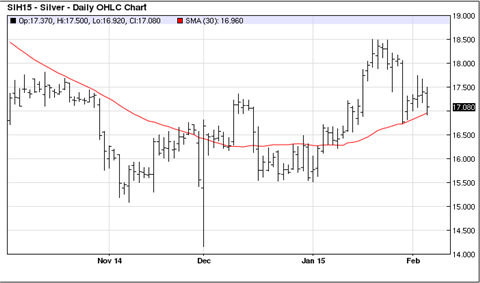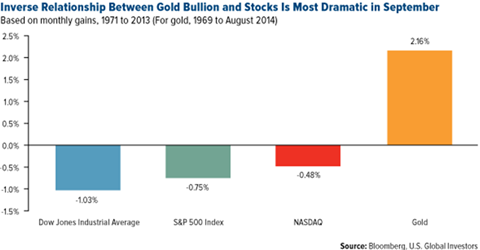Why short an ETF Buy inverse Stockhouse news
Post on: 15 Апрель, 2015 No Comment

When you have an investment thats had a long period of negative returns, such as the Horizons BetaPro NYMEX Natural Gas Bull Plus ETF (TSX: T.HNU. Stock Forum ), it would stand to reason that taking a short position in this ETF would be a winning strategy.
Indeed last week, Stockhouse published a provocative piece by Cory Mitchell entitled, Underperformance and profiting from it TSX:HNU . Mr. Mitchell made a compelling case that shorting HNU was a far better strategy than buying the ETF. Its hard to argue with the difference in return if you had shorted HNU, at its peak price and held it until November 30, 2011.
Mr. Mitchells argument has everything to do with the direction of the asset class rather than a deficiency with HNU as an ETF. HNU seeks to deliver two-times the daily return of the NYMEX Natural Gas futures contract for the next delivery month. HNU has met this investment objective with great precision. Unfortunately for the Natural Gas bulls, prices have tended to move negatively much more than they have moved positively since HNU hit its high in 2008, so long investors in the ETF have been taking a leveraged position on the wrong side of the trade.
When we launched our family of leveraged ETFs we were very deliberate in offering a Bull and Bear pair of ETFs for the same asset class. Today, we offer 16 pairs of leveraged ETFs, with each pair offering 2x daily long (Bull) or short (Bear) exposure to various equity, currency, fixed income and commodity benchmarks.
The performance of Natural Gas is a perfect example of why we try and offer two-sides to every leveraged trade, because if long investors in Natural Gas are getting pummelled, you can be sure that short investors are making heaps of money. Unless there is no movement in the underlying price of an asset class, at the end of a trading day, one of the pair of BetaPro ETFs is ahead. Natural Gas bears have done exceptionally well over the last few years versus the far larger number of Natural Gas bulls that we have seen in the marketplace.
Within our BetaPro ETF family, were agnostic on the direction of asset classes, we manage our ETFs to deliver their investment objectives and both HNU and its pair ETF, the leveraged inverse Horizons BetaPro NYMEX Natural Gas Bear Plus ETF (TSX: T.HND. Stock Forum ), have done so brilliantly. As natural gas has plummeted HNU has fallen hard, while HND has been the best performing ETF in Canada on a three-year basis.
It stands to reason that being short HNU would have been a profitable trade, but it doesnt even hold a candle to how profitable buying HND would have been during the same period outlined in Mr. Mitchells article, where he traced HNUs decline from its high in July of 2008 through to November 30, 2011.
Using the date range that Mr. Mitchell used, we calculated a comparison of the hypothetical returns that would have been received from shorting HNU versus buying and holding HND over the same period. Of course, this wouldnt be an apples-to-apples comparison if we didnt factor in margin costs as well, since an investor would have to use a margin account to borrow and short the ETF. Whereas an investor does not have to use margin when investing in a inverse or leveraged inverse ETF, nor do they take on the potential unlimited risk from shorting; that is to say, they would never lose more than their principal investment.
In both HNU and HND there were numerous splits and reverse splits over the period. These however have no impact on the dollar value of a principal investment in the ETF. If an investor had bought 1,000 units of HNU at its high end of day net asset value (NAV), it would have cost about $47,992. Holding that position without any rebalancing until November 30, 2011, would have resulted in a 99.8% loss with the investment only having an ending value of about $64.

Before factoring in margin costs, borrowing and shorting 1,000 HNU units from its high end of day NAV price would have had a value of approximately $47,992. Holding this hypothetical short position until November 30, 2011, would have resulted in a nearly 100% return. The investor would have effectively doubled their money for an ending value of $95,920. If you conservatively factor in a margin cost of 5.00% per annum*, this would have resulted in an ending value of $81,532 or a net gain of approximately $33,540, roughly a 70% return.
If an investor had chosen to make the same dollar investment into units of HND, when HNUs NAV was at its high, and held the units without any rebalancing until November 30, 2011, not only would they have not been subject to any margin costs, unlimited downside risk, or even the risk of being called away, but the ETF would have benefitted from the compounding of returns. During an uptrend the daily reset results in a growing principal value as well as delivering two-times the daily inverse return of the underlying price of natural gas futures.
The end result is that the investor in HND would have hypothetically seen a 2,000%+ return over the same period. The ending value of the investment at November 30, 2011 would have been worth over $1 million at $1,024,279. Thats not a typo, a $47,992 investment in HND on July 3, 2008, at its low of $0.65 a unit, on split adjusted basis, would have been worth over $1 million on November 30, 2011. Even a $5,000 investment at that time would have been worth more than $100,000 on November 30, 2011.
FOR ILLUSTRATION PURPOSES ONLY
Investment














